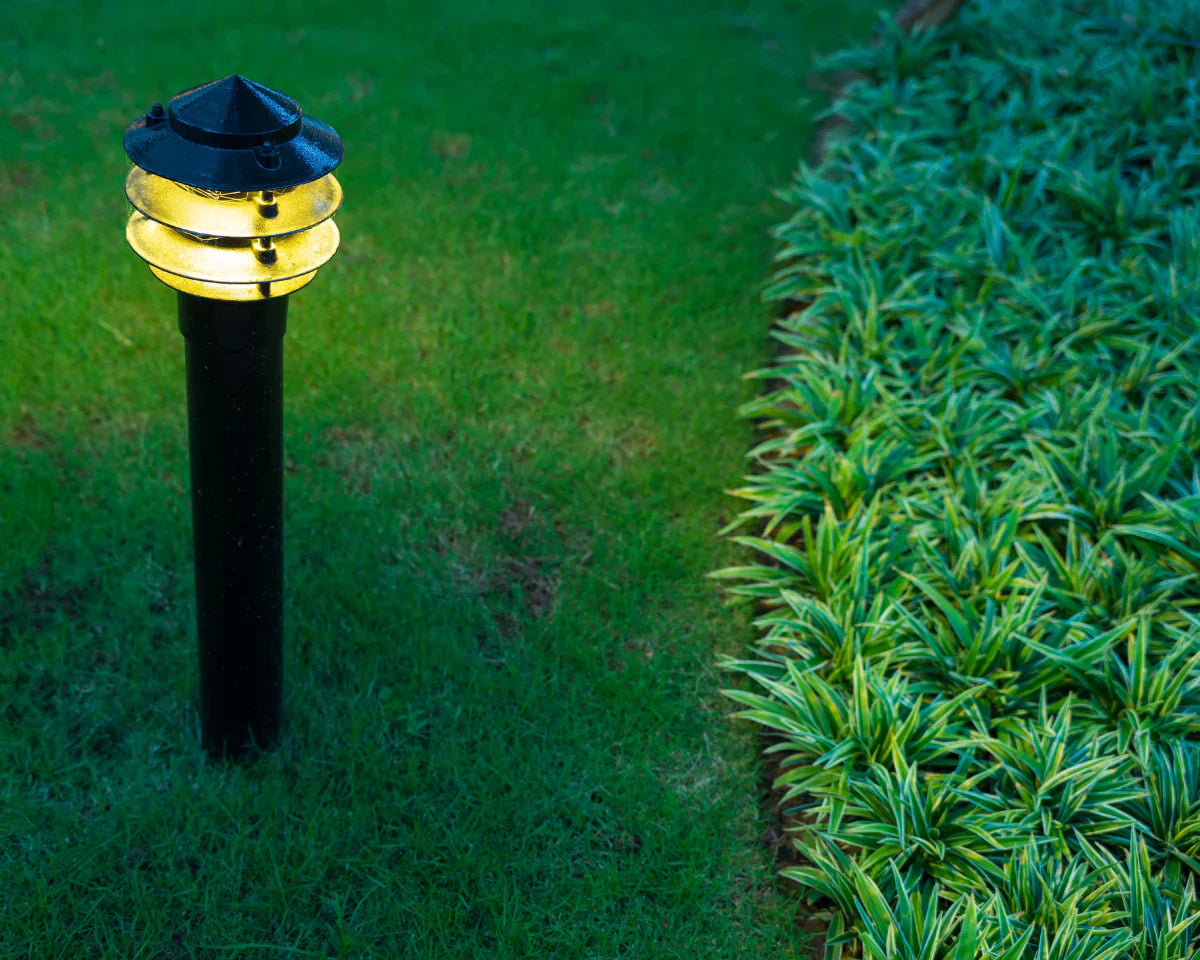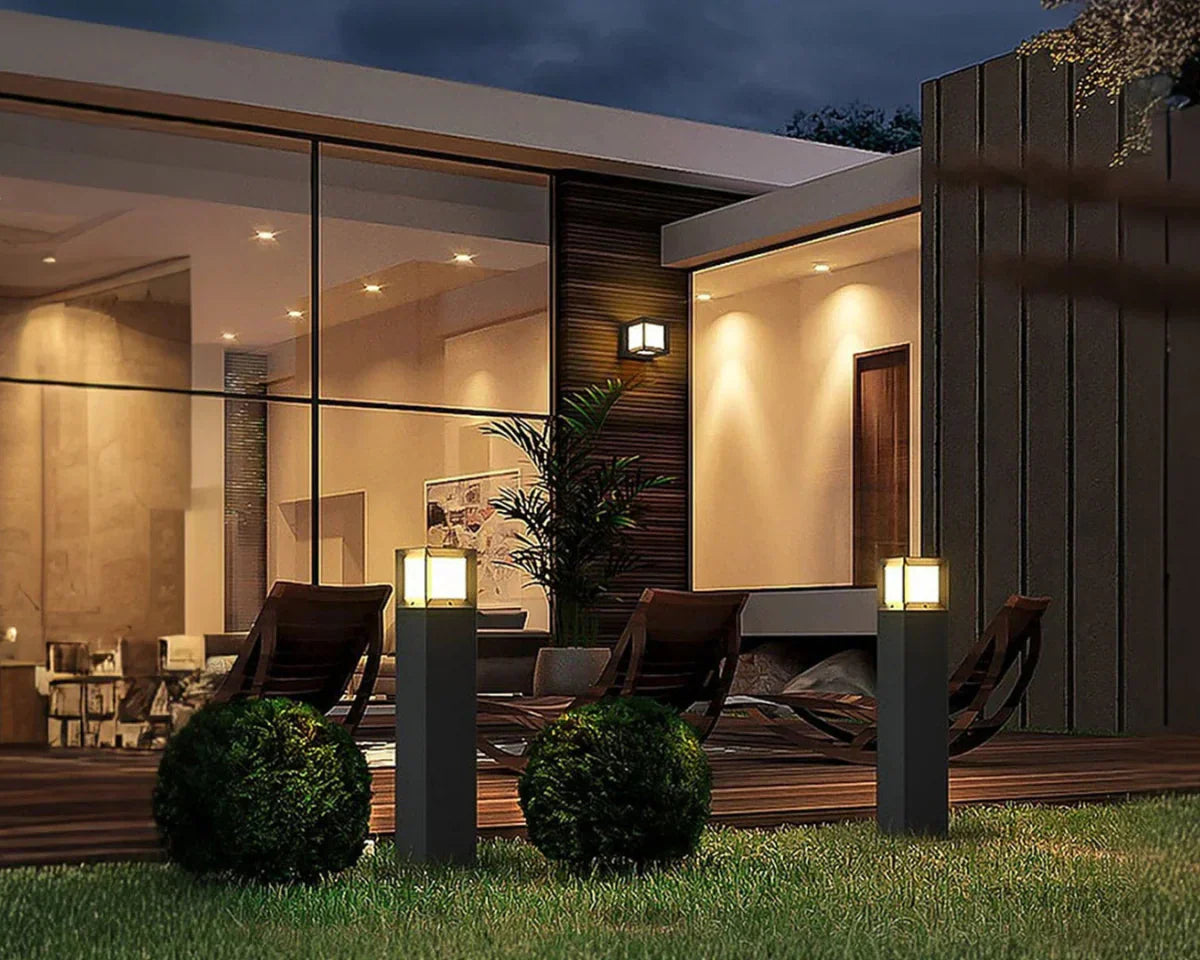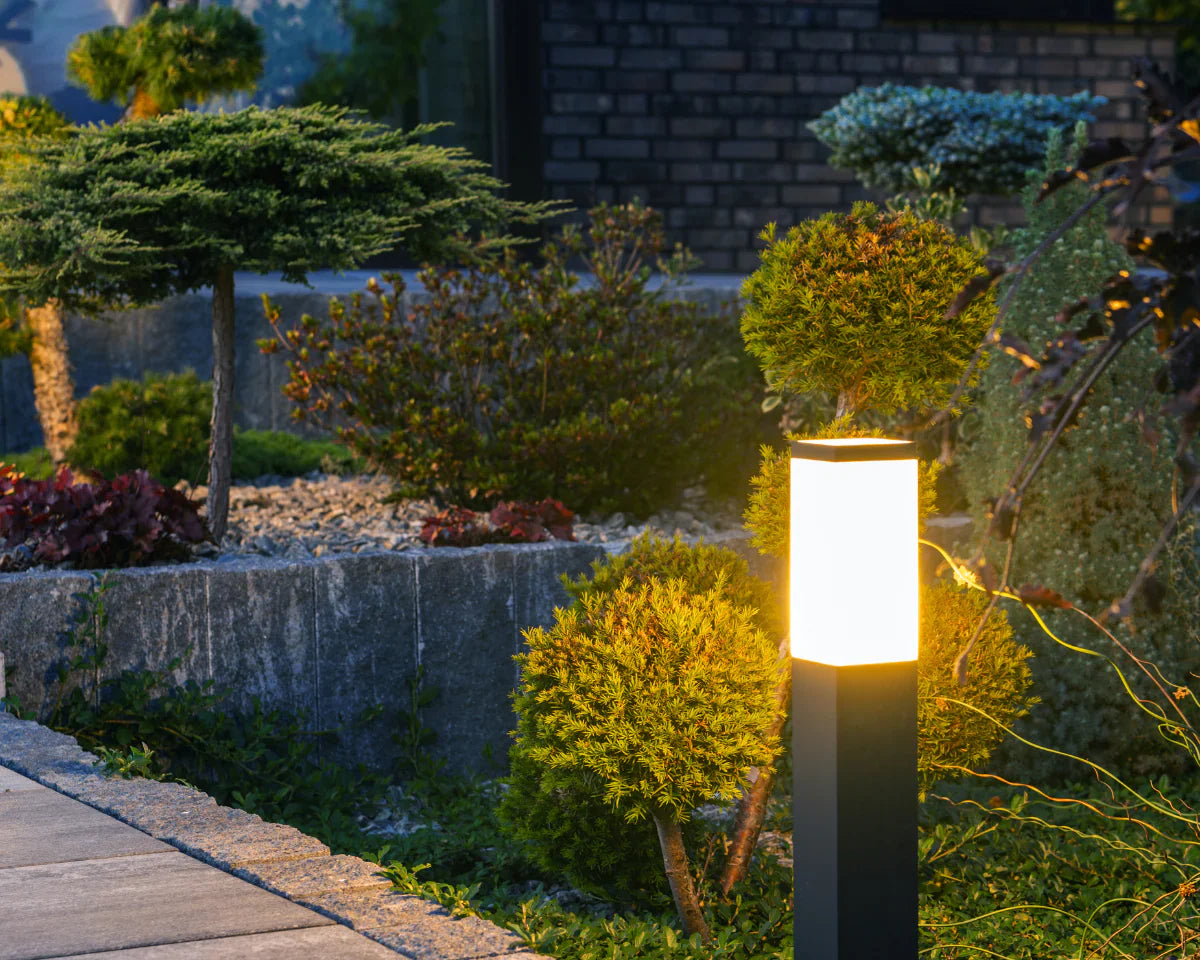Ideas & Advice

Ideas & Advice
A Complete Guide to Motion Sensor Lights for Your Home and Garden
by Lamp Outdoor UK
on Sep 15 2025
Motion sensor lights are becoming increasingly popular for both indoor and outdoor use. They provide convenience, improve safety, and save energy — making them a practical choice for modern homes. In this guide, we’ll explain how they work, their benefits, and tips for choosing the right motion sensor light for your needs.
What Are Motion Sensor Lights?
Motion sensor lights are equipped with sensors that detect movement within a certain range. When motion is detected, the light automatically turns on and stays illuminated for a preset time before turning off again.
The most common types of sensors include:
PIR (Passive Infrared) Sensors: Detect heat signatures from humans or animals.
Microwave Sensors: Use radar waves to detect movement, suitable for larger areas.
Dual Technology Sensors: Combine both PIR and microwave for higher accuracy.
Benefits of Motion Sensor Lights
Enhanced SecurityMotion sensor lights deter unwanted visitors by instantly lighting up dark areas like driveways, backyards, or entrances when movement is detected.
Energy EfficiencyThey only activate when needed, saving electricity compared to lights that stay on all night.
ConvenienceNo need to search for switches — perfect for garages, stairways, or hallways when your hands are full.
Extended Bulb LifeLights stay off when not needed, reducing wear and tear on bulbs and fixtures.
Where to Install Motion Sensor Lights
Outdoor Areas: Driveways, garden paths, entrances, patios, and garages.
Indoor Areas: Hallways, closets, basements, and bathrooms for nighttime convenience.
How to Choose the Right Motion Sensor Light
Detection Range & Angle:Consider the area size; wider angles and longer ranges suit large gardens or driveways.
Brightness (Lumens):Brighter lights for security, softer lights for decorative or indoor use.
Adjustable Settings:Look for lights with adjustable sensitivity, timer settings, and brightness levels.
Weather Resistance:For outdoor use, choose fixtures with IP65 or higher waterproof ratings.
Installation Tips
Mount at the correct height (typically 6–10 feet) for best detection performance.
Avoid placing sensors near heat sources like air vents or direct sunlight to prevent false triggers.
Regularly clean the sensors to maintain accuracy.
Conclusion
Motion sensor lights combine security, convenience, and energy savings, making them a smart investment for any property. Whether you want to illuminate your garden path at night or keep intruders at bay, choosing the right motion sensor light ensures your home stays bright and safe whenever you need it.

Ideas & Advice
Solar vs Wired Outdoor Lights: Which Is Better for Your Outdoor Space?
by Lamp Outdoor UK
on Sep 15 2025
When planning your outdoor lighting, one of the first decisions you’ll face is whether to choose solar outdoor lights or wired outdoor lights. Both options have unique advantages and potential drawbacks, and the best choice depends on your specific needs, budget, and outdoor space design.
In this article, we’ll compare solar vs wired outdoor lights in terms of installation, cost, brightness, maintenance, and energy efficiency — so you can make the right decision for your garden, patio, driveway, or backyard.
Installation: Easy Setup vs Professional Wiring
Solar Outdoor Lights:
No complicated wiring required.
Perfect for DIY homeowners who want quick and simple installation.
Can be placed almost anywhere with direct sunlight, such as garden paths, fences, or patios.
Wired Outdoor Lights:
Require professional installation with underground cables or connections to your home’s electrical system.
Offer a permanent and stable lighting solution, ideal for large outdoor areas or security lighting systems.
Energy Efficiency and Operating Costs
Solar Outdoor Lights:
100% powered by the sun — no electricity bills.
Best for eco-friendly and energy-efficient outdoor lighting solutions.
Perfect for “green energy outdoor lighting” enthusiasts.
Wired Outdoor Lights:
Rely on your home’s power supply; electricity costs depend on usage and local rates.
Energy-efficient LED wired lights reduce power consumption significantly compared to traditional bulbs.
Conclusion: Solar lights win in long-term cost savings and sustainability.
Brightness and Performance
Solar Lights:
Brightness depends on sunlight exposure and battery capacity.
Ideal for decorative and ambient lighting — pathways, garden accents, patio string lights.
Wired Lights:
Provide consistent, high-intensity illumination regardless of weather or time of year.
Better choice for security lighting, floodlights, and areas needing strong visibility.
Weather Resistance and Reliability
Solar Outdoor Lights:
Performance may drop on rainy or cloudy days.
Look for models with IP65 waterproof ratings for durability.
Wired Outdoor Lights:
Work in all weather conditions as long as the power supply remains stable.
Require waterproof fixtures and professional-grade wiring for safety.
Maintenance and Longevity
Solar Lights:
Occasional battery replacement may be required after 1–2 years.
Keep solar panels clean for optimal performance.
Wired Lights:
Minimal maintenance once installed properly.
Long-lasting with durable materials and LED technology.
Cost Comparison: Upfront vs Long-Term
Lighting Type
Installation Cost
Operating Cost
Long-Term Value
Solar Outdoor Lights
Low (DIY friendly)
Zero electricity cost
High savings over time
Wired Outdoor Lights
Higher (professional)
Monthly electricity bill
Long-term reliability, brighter light
When to Choose Solar vs Wired Outdoor Lights
Choose Solar Outdoor Lights if:
You want eco-friendly outdoor lighting with zero electricity bills.
Your area gets plenty of direct sunlight.
You prefer a quick DIY setup with minimal maintenance.
Choose Wired Outdoor Lights if:
You need bright, reliable outdoor lighting for security or large spaces.
You want consistent performance year-round, regardless of weather conditions.
You don’t mind professional installation and upfront costs.
Final Verdict: Which Is Better?
There’s no one-size-fits-all answer. For decorative garden lighting, pathways, or patios, solar outdoor lights are cost-effective, eco-friendly, and easy to install.
For security lights, driveways, or commercial properties, wired outdoor lights provide the brightness and reliability you need.
Many homeowners even combine both types for the perfect balance of efficiency and performance.

Ideas & Advice
Understanding IP Ratings for Outdoor Lighting: A Complete Guide
by Lamp Outdoor UK
on Sep 15 2025
When choosing outdoor lighting, the IP rating is a key factor to consider. It directly impacts a fixture’s resistance to dust, water, and overall durability in harsh outdoor environments. In this guide, we’ll break down what IP ratings mean, the most common levels, and how to choose the right one for your outdoor space.
What Is an IP Rating?
IP stands for Ingress Protection. It is followed by two numbers:
The first number represents the level of protection against solid objects such as dust.
The second number refers to protection against liquids like rain or water jets.
For example, IP65 means:
6: Completely dust-tight. No dust can enter the fixture.
5: Protected against water jets from any direction.
The higher the numbers, the better the protection.
Common IP Ratings and Their Applications
IP Rating
Dust Protection
Water Protection
Suitable Applications
IP44
Protection from solid objects >1mm
Splash-resistant
Covered porches, balconies, garages
IP54
Basic dust protection
Water splashes from any direction
Garden paths, patio lighting
IP65
Fully dust-tight
Water jets
Wall lights, landscape lighting
IP66
Fully dust-tight
Powerful water jets
Poolside areas, open plazas
IP67
Fully dust-tight
Temporary immersion
Pond lights, fountain lighting
IP68
Fully dust-tight
Continuous submersion
Underwater lights, fountain interiors
How to Choose the Right IP Rating
Assess the Installation Area
Semi-covered areas like porches: IP44 is usually sufficient.
Open spaces like gardens or pathways: Consider IP65 or higher.
Factor in Weather Conditions
Wet or snowy climates: IP66 and above recommended.
Dry regions: IP54 or IP65 will do.
Special Applications
Underwater lighting requires IP68.
Tips to Extend Outdoor Light Lifespan
Check seals regularly to prevent water leakage.
Choose corrosion-resistant materials like stainless steel or aluminum.
Avoid prolonged submersion even if the light is rated IP68.
Conclusion
Knowing the IP rating helps you choose the right outdoor lighting for safety, durability, and performance. Whether it’s a cozy patio or a large garden landscape, the right IP level ensures your lights can handle the elements all year round.

